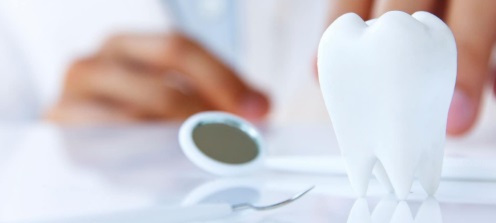Laser Dentistry Explained: Faster, Painless Treatments for Healthier Gums
The sound of a dental drill can send shivers down anyone’s spine. For decades, patients have associated dental visits with discomfort, lengthy procedures, and extended recovery times. But what if there was a way to transform your dental experience into something almost painless, faster, and more precise?
Enter laser dentistry—a revolutionary approach that’s changing how we think about oral healthcare. This cutting-edge technology uses focused light beams to perform various dental procedures with remarkable precision and minimal discomfort. From treating gum disease to performing soft tissue surgeries, laser dentistry offers a gentler alternative to traditional methods.
The benefits extend far beyond comfort. Laser treatments often require no anesthesia, heal faster than conventional procedures, and can be completed in a single visit. For patients who have avoided necessary dental work due to anxiety or fear of pain, laser dentistry opens doors to better oral health without the traditional drawbacks.
Introduction to Laser Dentistry
Laser dentistry represents one of the most significant advances in dental technology over the past few decades. The term “laser” stands for Light Amplification by Stimulated Emission of Radiation—a focused beam of light energy that can be precisely controlled to interact with tissue.
The Food and Drug Administration (FDA) first approved lasers for dental use in the 1990s, and since then, the technology has evolved dramatically. Modern dental lasers can target specific types of tissue while leaving surrounding areas completely untouched. This precision is what makes laser dentistry so revolutionary.
There are two main categories of dental lasers: hard tissue lasers and soft tissue lasers. Hard tissue lasers are designed to cut through tooth structure and bone, making them ideal for cavity preparation and bone surgery. Soft tissue lasers work on gums and other soft tissues, perfect for gum contouring, treating periodontal disease, and removing excess tissue.
The science behind laser dentistry is fascinating yet straightforward. Different wavelengths of light are absorbed by different types of tissue. By selecting the appropriate wavelength, dentists can target specific areas with incredible accuracy. The laser energy removes or reshapes tissue through a process called photodisruption, which essentially vaporizes the targeted cells.

Benefits of Laser Dentistry
The advantages of laser dentistry over traditional methods are numerous and compelling. Perhaps the most significant benefit is the dramatic reduction in pain and discomfort. Many laser procedures can be performed without any anesthesia at all, as the laser seals nerve endings during treatment.
Bleeding is minimized or eliminated entirely with laser dental treatments. The laser energy cauterizes blood vessels as it works, creating a bloodless field that allows for better visibility and more precise treatment. This also means less swelling and bruising after the procedure.
Recovery times are substantially shorter with laser dentistry. Because the laser promotes faster healing and reduces trauma to surrounding tissues, patients often return to normal activities the same day. The precision of laser treatment means less damage to healthy tissue, which translates to quicker healing.
Sterilization is built into the laser treatment process. The high-energy light beam sterilizes the treatment area as it works, significantly reducing the risk of bacterial infection. This is particularly beneficial for patients with compromised immune systems or those prone to infections.
The precision of laser technology allows dentists to be more conservative with their treatments. Instead of removing large amounts of healthy tissue to access problem areas, lasers can target exactly what needs to be treated. This preservation of healthy tissue is especially important for long-term oral health.
Many patients also appreciate that laser procedures often require fewer follow-up visits. The combination of reduced trauma, faster healing, and built-in sterilization means complications are rare, and results are typically excellent from the first treatment.
Types of Laser Dental Procedures
Laser dentistry encompasses a wide range of treatments, each designed to address specific oral health concerns with maximum comfort and efficiency.
Periodontal Treatment
Laser therapy has revolutionized the treatment of gum disease. Traditional periodontal therapy often involves cutting away infected gum tissue with scalpels, which can be painful and require extensive healing time. Laser periodontal therapy, however, targets and removes only the diseased tissue while stimulating healthy tissue regeneration.
The laser can reach deep into periodontal pockets to eliminate bacteria and infected tissue that traditional cleaning methods might miss. This thorough cleaning helps prevent the progression of gum disease and can even help regenerate lost bone and tissue in some cases.
Cavity Treatment
Hard tissue lasers can prepare cavities for fillings without the need for traditional drills. The laser removes decayed tooth material with precision, often without requiring anesthesia. This is particularly beneficial for patients with dental anxiety or those who are sensitive to the vibrations and sounds of traditional dental drills.
Soft Tissue Procedures
Gum contouring and crown lengthening procedures become much more comfortable with laser technology. Whether you have a “gummy smile” or need tissue removed to accommodate a crown, lasers can reshape your gum line with minimal discomfort and excellent aesthetic results.
Cold Sore and Lesion Treatment
Lasers can effectively treat cold sores, canker sores, and other oral lesions. The treatment not only provides immediate pain relief but can also speed healing and reduce the likelihood of recurrence.
Whitening Enhancement
Some laser systems can enhance teeth whitening procedures, helping to activate whitening agents for more dramatic and longer-lasting results.
What to Expect During Laser Treatment
Understanding what happens during a laser dental procedure can help alleviate any anxiety and prepare you for a comfortable experience.
Before treatment begins, your dentist will conduct a thorough examination and discuss your treatment options. They’ll explain exactly what the laser will accomplish and answer any questions you might have. In many cases, no special preparation is required.
During the procedure, you’ll wear protective eyewear to shield your eyes from the laser light. The dentist will use a handheld laser device that looks similar to a dental drill but operates completely differently. Instead of mechanical cutting and vibration, you’ll experience only the gentle sensation of the laser working.
Most patients report feeling little to no discomfort during laser procedures. Some describe a slight warming sensation or mild pressure, but the intense pain associated with traditional dental procedures is typically absent. The absence of vibration and noise also contributes to a more relaxing experience.
Procedure times vary depending on the treatment, but many laser procedures are significantly faster than traditional methods. What might have taken multiple appointments with conventional techniques can often be completed in a single visit.
Throughout the treatment, your dentist will monitor your comfort level and can adjust the laser settings if needed. Communication is always encouraged, and you should never hesitate to let your dental team know how you’re feeling.
Recovery and Aftercare
One of the most appealing aspects of laser dentistry is the simplified recovery process. Most patients experience minimal post-treatment discomfort and can return to their normal routines quickly.
Immediately after treatment, you might notice some minor swelling or sensitivity, but this typically resolves within 24 to 48 hours. Over-the-counter pain relievers are usually sufficient for any discomfort, though many patients find they don’t need any pain medication at all.
The laser’s sterilizing effect means the risk of infection is extremely low. However, maintaining good oral hygiene is still important for optimal healing. Your dentist will provide specific aftercare instructions tailored to your treatment.
For soft tissue procedures, eating soft foods for the first day or two can help ensure comfortable healing. Avoiding extremely hot or spicy foods is also recommended until any sensitivity subsides.
Follow-up appointments are typically brief and focused on monitoring healing progress. The precision of laser treatment and reduced trauma to surrounding tissues means complications are rare, and most patients heal exactly as expected.
Is Laser Dentistry Right for You?
Laser dentistry offers benefits for most dental patients, but certain individuals may find it particularly advantageous. Patients with dental anxiety often find laser procedures much more tolerable than traditional methods. The absence of drilling sounds, vibrations, and significant pain can transform the dental experience for anxious patients.
Those with bleeding disorders or who take blood-thinning medications may be excellent candidates for laser dentistry due to the reduced bleeding associated with these procedures. Similarly, patients with compromised immune systems benefit from the built-in sterilization that laser treatment provides.
If you have a busy schedule, the faster treatment times and reduced recovery periods associated with laser dentistry might make it an ideal choice. Many procedures that traditionally required multiple visits can be completed in a single appointment.
However, not every dental procedure can be performed with lasers. Complex restorative work, tooth extractions, and some types of oral surgery may still require traditional methods. Your dentist can evaluate your specific needs and determine whether laser treatment is appropriate for your situation.
The cost of laser dentistry varies depending on the procedure and your location, but many patients find the benefits—reduced pain, faster healing, fewer appointments—make it a worthwhile investment in their oral health and overall well-being.

Finding a Qualified Laser Dentist
Not all dental practices offer laser dentistry, so finding a qualified provider requires some research. Look for dentists who have received specific training in laser techniques and own the appropriate equipment for your needs.
Advanced practices like Macedo Smile Designer/Advanced Center for Cosmetic Dentistry invest in the latest laser technology and ensure their staff receives comprehensive training in these advanced techniques. When evaluating potential providers, don’t hesitate to ask about their experience with laser procedures and the types of laser equipment they use.
Credentials and continuing education are important factors to consider. Dentists who stay current with the latest advances in laser technology are more likely to provide excellent results and ensure your comfort throughout the treatment process.
During your consultation, a qualified laser dentist should be able to explain how laser treatment will benefit your specific situation and provide realistic expectations about results and recovery. They should also be transparent about any limitations of laser treatment for your particular case.
Laser dentistry represents a significant advancement in dental care, offering patients minimally invasive, precise, and efficient treatment options. By choosing a knowledgeable and experienced laser dentist, you can ensure the best possible results tailored to your needs. Whether addressing common dental concerns or seeking cosmetic improvements, laser dentistry has the potential to enhance both your oral health and overall experience at the dentist’s office.
https://www.google.com/maps?cid=11223011915097161618
